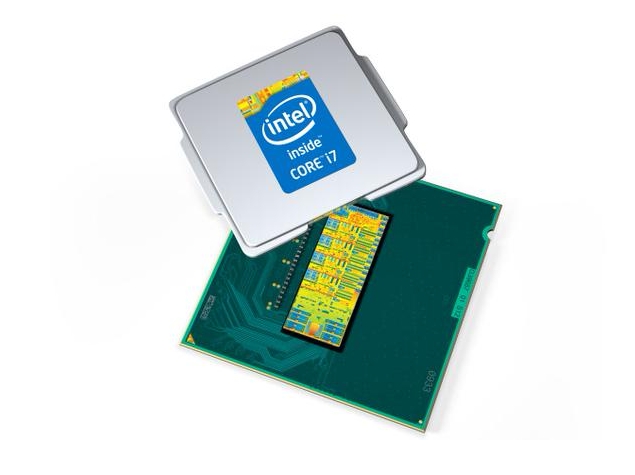- Home
- Laptops
- Laptops News
- Intel Delays 10nm Cannonlake CPUs Citing Challenges Shrinking Below 14nm
Intel Delays 10nm Cannonlake CPUs Citing Challenges Shrinking Below 14nm

Nothing is known about Kaby Lake at this point, except that it will be fabricated at 14nm. Cannonlake in 2016 would have been a shrink of Skylake without any major architectural changes, ie a "tick" whereas Skylake itself is a "tock", ie a new architecture on the fabrication process proven by its own predecessor. Kaby Lake could end up being a very mild refresh with a new name for marketing purposes, or might allow the company to roll out new innovations that it couldn't have done with a "tick" generation.
Skylake is still on target for launch towards the end of this year, and will be known as Intel's sixth-generation Core microarchitecture. It will replace current Haswell and Broadwell chips across devices ranging from ultra-thin tablets to desktop workstations and servers.
The announcement was made by Intel CEO Brian Krzanich during a second-quarter earnings call with shareholders and analysts. Earnings were better than expected, thanks largely to strong demand for data centre products which compensated for the ongoing decline of consumer PC processors.
Intel recently celebrated the 50th anniversary of Moore's Law, the guiding principle stated by company founder Gordon Moore, that the number of transistors in a processor would double every 18-24 months. Moore's Law has held true so far, but the delay in transitioning to 10nm highlights the complexities inherent to shrinking semiconductors while managing power leakage. IBM last week demonstrated an experimental processor with functioning 7nm transistors, but it is not ready for commercial applications yet.
Get your daily dose of tech news, reviews, and insights, in under 80 characters on Gadgets 360 Turbo. Connect with fellow tech lovers on our Forum. Follow us on X, Facebook, WhatsApp, Threads and Google News for instant updates. Catch all the action on our YouTube channel.
Related Stories
- Samsung Galaxy Unpacked 2025
- ChatGPT
- Redmi Note 14 Pro+
- iPhone 16
- Apple Vision Pro
- Oneplus 12
- OnePlus Nord CE 3 Lite 5G
- iPhone 13
- Xiaomi 14 Pro
- Oppo Find N3
- Tecno Spark Go (2023)
- Realme V30
- Best Phones Under 25000
- Samsung Galaxy S24 Series
- Cryptocurrency
- iQoo 12
- Samsung Galaxy S24 Ultra
- Giottus
- Samsung Galaxy Z Flip 5
- Apple 'Scary Fast'
- Housefull 5
- GoPro Hero 12 Black Review
- Invincible Season 2
- JioGlass
- HD Ready TV
- Laptop Under 50000
- Smartwatch Under 10000
- Latest Mobile Phones
- Compare Phones
- OnePlus 15R
- Realme Narzo 90x 5G
- Realme Narzo 90 5G
- Vivo S50 Pro Mini
- Vivo S50
- OPPO Reno 15c
- Redmi Note 15 5G
- Redmi Note 15 Pro 5G
- Asus ProArt P16
- MacBook Pro 14-inch (M5, 2025)
- OnePlus Pad Go 2
- Poco Pad M1
- Just Corseca Skywatch Pro
- Honor Watch X5
- Acerpure Nitro Z Series 100-inch QLED TV
- Samsung 43 Inch LED Ultra HD (4K) Smart TV (UA43UE81AFULXL)
- Asus ROG Ally
- Nintendo Switch Lite
- Haier 1.6 Ton 5 Star Inverter Split AC (HSU19G-MZAID5BN-INV)
- Haier 1.6 Ton 5 Star Inverter Split AC (HSU19G-MZAIM5BN-INV)

















